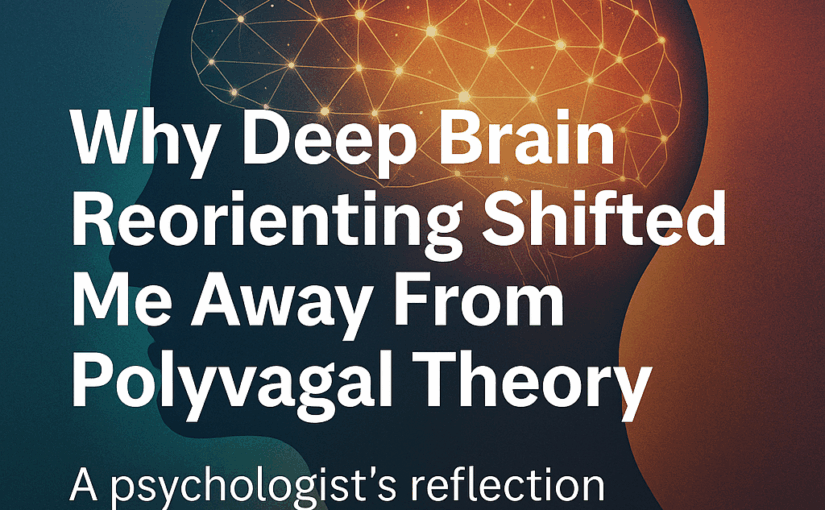The separation of Nicole Kidman and Keith Urban after almost twenty years together has sparked global attention. Some of us may be shocked, disappointed, and others may say the writing was on the wall. While celebrity stories often focus on glamour or scandal, as a couple’s psychologist, I see something deeper: the universal dynamics of love, loss, and how relationships evolve.
Imago Relationship Therapy offers a powerful lens here. It teaches that we are drawn to partners who mirror both our childhood love and our deepest hurts. These unconscious dynamics provide enormous growth potential but can also create tension. Through this perspective, their separation offers lessons we can all learn from.
Separation as evolution is not ending
Media reports describe this as a “strategic separation” rather than a divorce. We can guess this is simply a tactic to handle marriage breakdown in a public arena by being in control of the messaging. Wise move. In Imago terms, this framing suggests an attempt to move beyond unconscious patterns into a more conscious decision about what the relationship needs. By speaking of evolution, they reduce shame and keep the door open for future possibilities.
Public image versus private vulnerability
For years, the couple’s red-carpet affection may have contrasted with unspoken struggles behind the scenes. Big careers, time apart, and disconnection, living parallel lives.
This mirrors how many couples, not only celebrities, present a strong public face while silently suffering. This is the couple where you would say they seemed so good, so loving, we never saw that coming. Imago reminds us that real intimacy happens when masks drop and partners meet each other with honesty and empathy, not performance.
Life stage and accumulated pressures
After nearly two decades, pressures from careers, parenting teenagers, and personal transitions, grief and loss often converge. In Imago, we understand this as a natural stage, the move from romantic love into the power struggle, and then, if embraced, into a conscious relationship of deeper love. The key is whether couples choose to engage with these challenges or retreat from them.
Communication and unmet needs
“I need space” often signals unmet needs that have not been voiced or heard. It’s the escape hatch to stepping further away from a marriage. Without safe dialogue, partners may turn to silence, and withdraw to survive. A lonely existence. Imago Dialogue, with its emphasis on mirroring, validation, and empathy, offers a way back to being truly heard. Without it, distance replaces intimacy.
Silent divorce: when connection fades without words
Some couples separate with drama. Others drift apart quietly. The Kidman Urban separation has been framed as respectful and intentional, but it could also be seen as a kind of silent divorce – when disconnection builds slowly, with little outward conflict, until the bond quietly dissolves.
A silent divorce can be harder to notice than open fighting. Partners may live parallel lives, whilst they avoid conflict, the price paid is avoiding intimacy.
The absence of arguments does not mean health. It may mean both have stopped hoping to be understood. A death knell in romantic relationships.
The good news is that silence is not irreversible. If couples recognise it early, therapy can help them reintroduce dialogue and rediscover the desire to connect.
The first step is breaking the silence. This takes courage. How can Imago Relationship Therapy help? Imago counsellors assist couples in coaching tried, and true communication skills that get to the heart of the issues.
Family, dignity, and legacy
With two daughters, their separation highlights the importance of modelling dignity. Children learn about love, conflict, and repair from what they observe. Even if a couple does not stay together, they can show that endings need not be destructive. Respectful separation can create a legacy of care rather than bitterness. Children are the passengers in this and don’t get a choice. So it’s vital to share age appropriately and shift to co-parenting strategies of support.
Frequently Asked Questions
What is a silent divorce?
A silent divorce is when partners slowly disconnect emotionally, often without fighting or dramatic conflict. They may appear fine to others, but feel lonely and unheard inside the relationship.
Why do long-term marriages end?
Long-term marriages often end due to accumulated stresses: career demands, parenting, identity changes, or unspoken needs. Inability to share beyond complaint, forgotten fun, lack of novelty, those surprises which remind us of our special bond, and emotional loneliness are what I have seen and heard in my office. Over time, the distance can grow until separation feels like the only option. Or there’s a bombshell, like an affair, that goes off in the relationship.
How can couples avoid a silent divorce?
The key is intentional communication. Couples need safe ways to voice needs, frustrations, and longings before silence takes over. Approaches like Gottman, EFT, and Imago Dialogue help partners listen deeply and reconnect to unmet needs. A relationship coach can guide you beyond frustration patterns toward a fulfilling partnership.
Is separation always negative?
Not necessarily. For some couples, separation provides breathing space to reflect and reset. If there are children involved, there will be an ongoing connection. For others, it allows each partner to grow individually while still honouring the relationship’s history.
How can therapy help during separation?
Couples Therapy provides a structured and compassionate space to reduce blame, shame, lower barriers of protective parts, express emotions, and explore choices. Couples may use this time to repair and recommit, or to separate respectfully with clarity and care. Individual therapy can assist in learning and healing from the break-up whilst holding on to your dignity.
Reflections
The Kidman Urban separation reminds us that relationships are not static. They are living systems that require dialogue, intention, and care. 19 years for a successful celebrity couple like Nicol and Keith is a testament to their love and I would guess hard work in and on their relationship, no doubt with professional support along the way.
Whether couples stay together or part ways, the goal is not perfection but authenticity of self, meeting each other with empathy, compassion, and if necessary, choosing to separate with dignity.
With Love and light,
Philipa.
P.S. Don’t leave it too late, reach out to repair today and book your appointment with Chris or me.








































